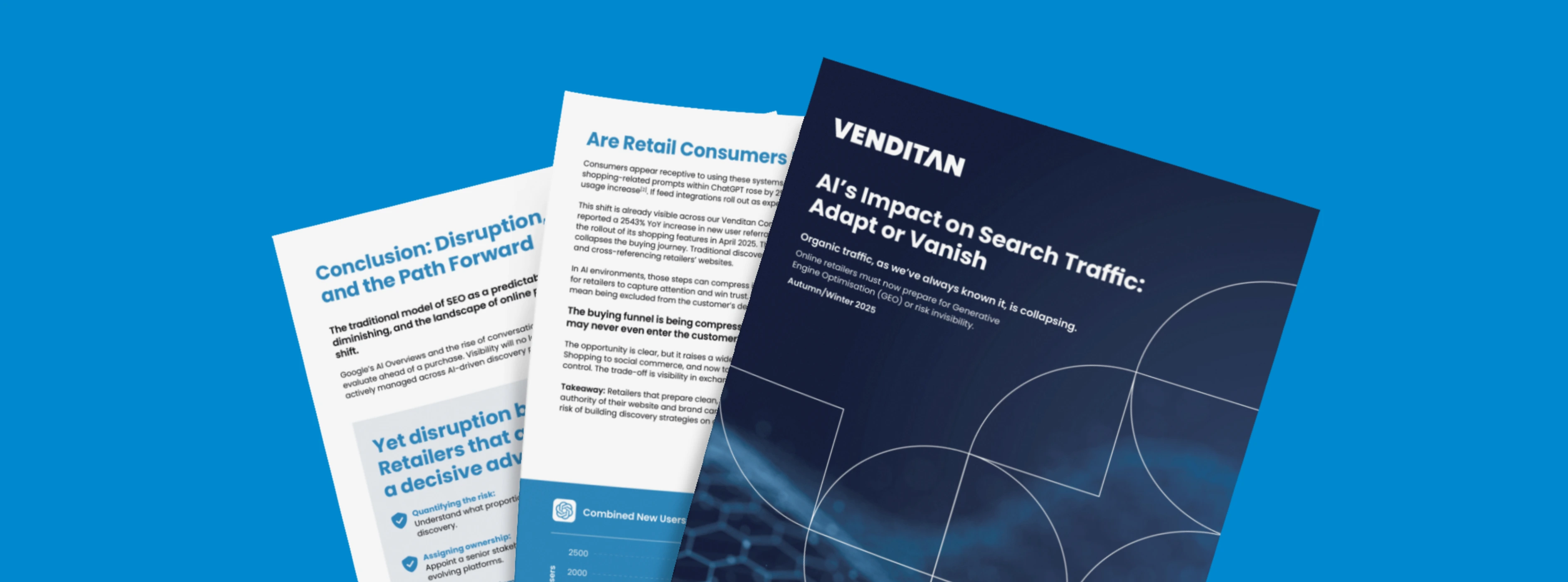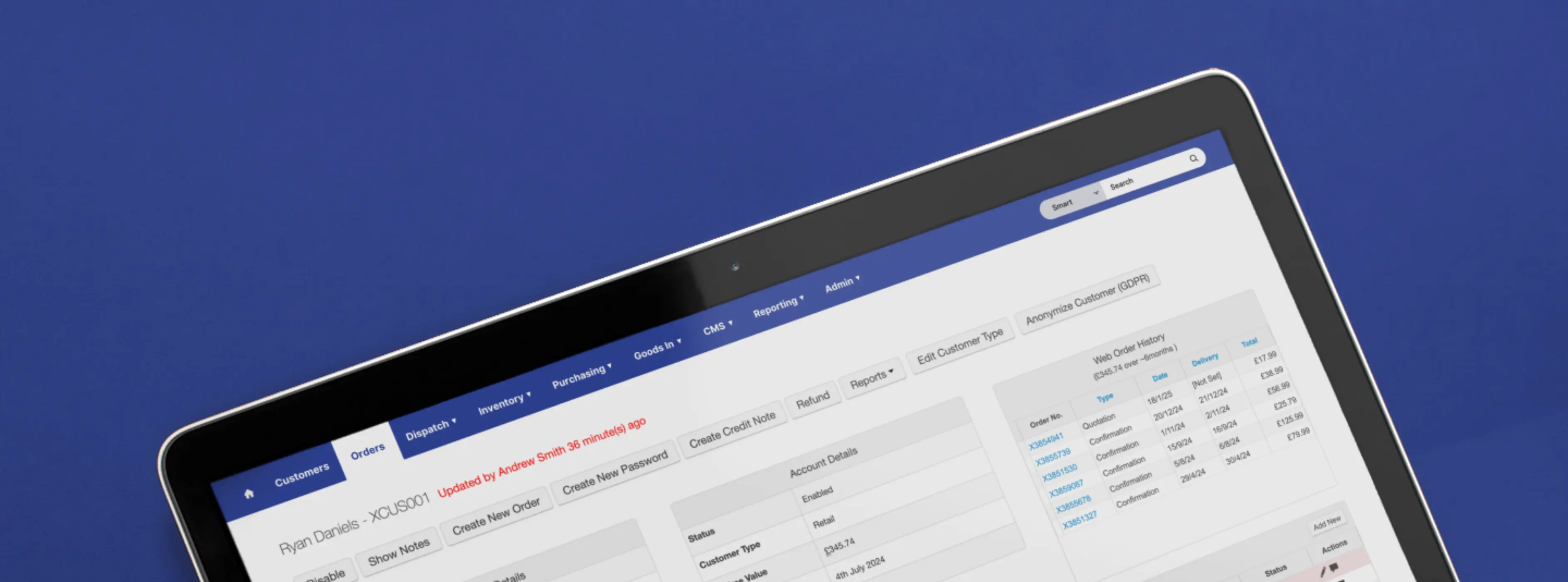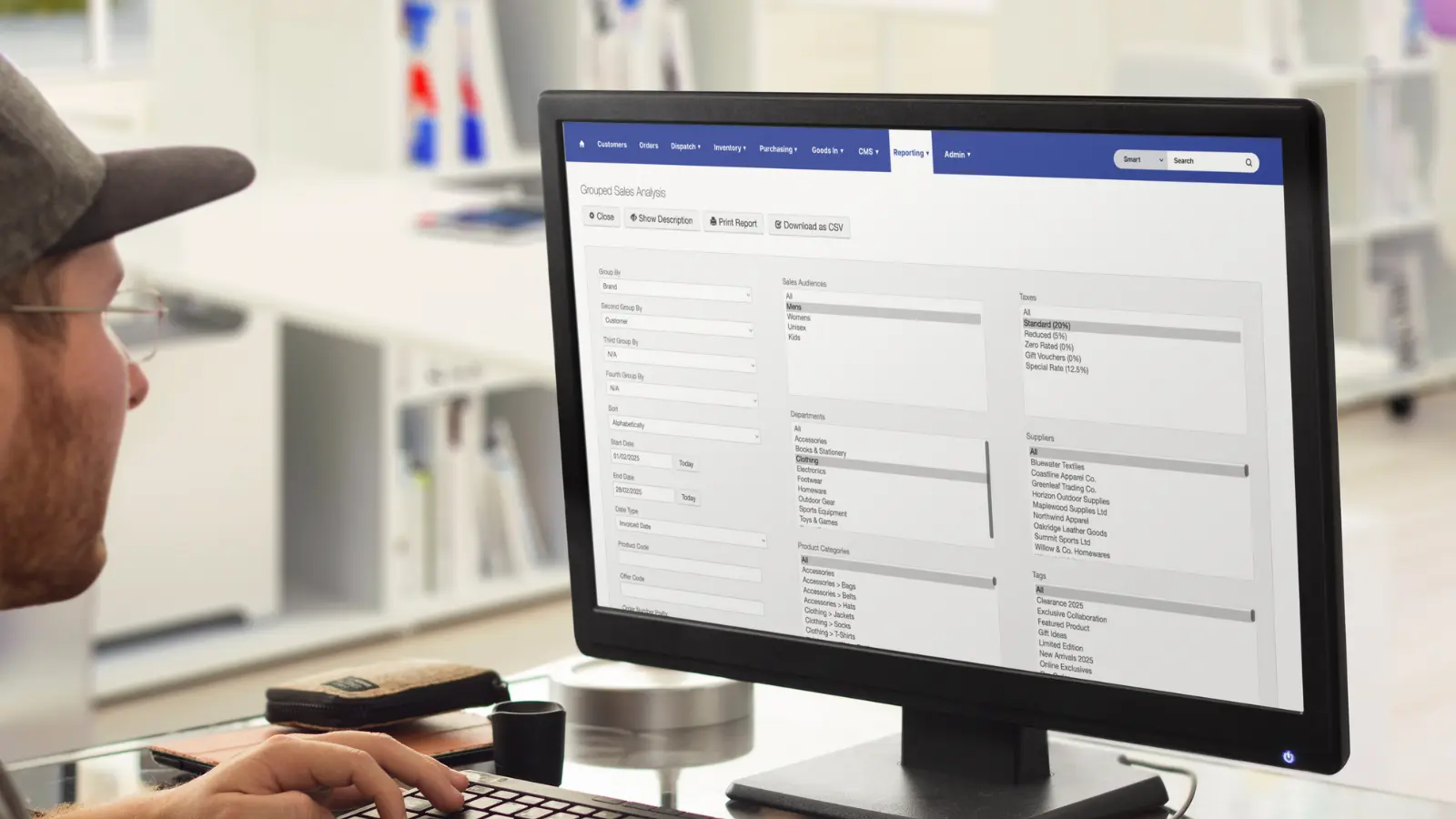Excess stock is one of the biggest pains for retailers. In fact, recent surveys suggest that nearly half of UK retailers are stuck with excess stock, even after their 2023 New Year sales.
And now, as the threat of an economic crisis continues to hang over our heads like an angry rain cloud waiting to burst, the retailers that are holding on to a surplus of inventory find themselves with a real problem to solve; KPMG reports that 61% of consumers plan to cut their discretionary spending in 2023, which would make the movement of this stock extremely challenging without some serious thought and innovation on the retailer’s part.
This article covers:
- The causes of excess stock
- The negative impacts this can have on a retailer
- How a retailer can start moving their mountain of inventory
- How we help our clients face these challenges
What causes excess stock?
Every retailer faces unique challenges and while we are loath to approach excess stock causes generically, here are some of the leading triggers:
- Inaccurate forecasting: Failing to anticipate peaks and troughs in customer demand can lead to an undersupply or oversupply of inventory.
- Ordering safety stock: Similarly, there may be a poor understanding of the stock levels required to meet those identified peaks, leading to an over-ordering of inventory to provide a buffer.
- Supply chain disruption: Perhaps a supplier has an inaccurate forecasting model itself or is experiencing difficulty in sourcing the materials it needs to develop its products and meet its demand. This would cause a ripple effect throughout the entire supply chain, of which the retailer is a part, and feels the impact.
- A sudden decrease in demand: Excellent forecasting models can’t account for sudden decreases in demand, forced by circumstances outside of the retailer’s control. An obvious example would be the start of the COVID-19 pandemic.
- Poor understanding of product life cycle: All products go through a life cycle. On a basic level: Launch, Growth, Maturity, Decline. As a product reaches the end of its maturity it will still be experiencing a demand, but this demand may be phasing out. This demand can be cyclical or occur over one life span. If a retailer fails to spot decline trends, based on previous demand patterns for similar products, then orders of fresh stock will remain at the same level while demand decreases. Thus, an excess of stock post-peak.
- Undercut on price by a competitor: It is possible that while the demand for the product has remained the same, consumers are now shopping elsewhere for the same product at a lower price, or, a lower-priced alternative to the product.
- Poor customer communication: It may be the case that the retailer is holding on to stock that their customers are willing to purchase, but they simply do not have the tools or channels in place to communicate that to them effectively.
How excess stock hurts retailers
In the UK, the average value of excess stock per merchant is £66,000, equivalent to 19% of overall inventory. It hurts cash flow, means you are less agile, takes up space and hits profit.
Let’s explore this in more detail:
- It affects the bottom line: Unless quick and innovative action is taken to push excess stock and achieve a small profit for the retailer, the best-case scenario will see the inventory sold off for an even break on the initial investment. What’s more likely is that the excess stock ends up heavily discounted or liquidated entirely if the stock becomes obsolete - a large and painful expense.
- It takes up space: Of course, all of this stock needs to be stored somewhere. Warehouse space occupied by excess inventory, rather than the more popular and profitable products, is simply not as profitable.
- The retailer loses agility: Successful eCommerce strategies are centred around the ability to pivot and adapt to the changing expectations of the modern consumer. Retailers are less able to do this if they are weighed down by excess inventory.
- Things can get out of control: You need no look further back than 2022, and the sad demise of Made.com to understand that excess stock can play a critical role in the failure of a business. The company moved from a ‘just in time’ model (only buying inventory to fill orders) to heavily investing funds from its IPO into the acquisition of stock to hold. Being unable to shift the excess was a key contributor to the company’s downfall, and it ended up auctioning its remaining sofas and tables, in a bid to recover funds for creditors.

How to deal with excess stock?
To be clear, ‘excess stock’ is defined as inventory that has not yet been sold and that exceeds the projected consumer demand for that product.
We are not talking about ‘obsolete stock’ which is defined as dead inventory that a business doesn't believe it can use or sell.
If you are reading this in the midst of a logistical challenge, don’t worry, the race isn’t run just yet. There are various methods and suggestions that we are going to list, and you will see that they follow an order.
To begin with, all efforts should be focused on building additional demand to meet those excess stock levels. It may simply be the case that with a little extra awareness, you will be able to shift large quantities of stock to new or existing customers.
Once fresh marketing has been exhausted, tactics can be deployed to incentivise new and existing customers to purchase the excess stock alongside your more popular products.
If you are still left with a high excess of stock, you can then explore more drastic measures such as discounting, donation and liquidation.
Email marketing
If you have been in business for a fair amount of time, then you will no doubt have developed a healthy customer data list that you can use for advertising purposes, provided they are opted-in to receive your marketing material.
There’s no reason not to contact your existing customers and make them aware of any promotions, discounts or featured products if they have consented to receive this information from you. It’s simple, often effective, and a standard first port of call for eCommerce promotion.
Segmentation
Your first port of call should be an audit of your data to determine how best you plan to use it to move your excess stock.
Sure, you could send out one promotional email en masse to your entire database - but we would argue that this blanket approach can be refined to increase the effectiveness of your campaign.
Customer segmentation is the process of breaking down your data into smaller audience sizes based on key variables such as demographic, browsing behaviour and purchasing history.
Here are a few examples of popular segments that can be used for advertising purposes:
- Demographic segmentation such as users of a specific age range, gender, location or combinations of these variables
- Repeat purchasers
- Recent purchasers
- Have not purchased over a certain period of time
- Previously engaged with promotional campaigns or discounts
- Previously purchased the excess stock (if the products lend themselves to a repeat purchase)
- Previously purchased products that complement the excess stock (perhaps they are accessories for a higher ticket item)
Email campaign
Once you have decided who you want to target with your email campaign, you will then need to consider what you place into their inbox.
To an extent, the messaging will be led by the segment you are targeting. If you were running a campaign towards inactive customers, for example, then you would naturally take an encouraging tone and perhaps incentivise their return to the website.
The primitive idea is to email a promotional campaign that raises awareness of the excess stock you need to deal with.
A fresh marketing push for your excess stock
Now, let’s discuss eCommerce digital marketing techniques that could help out your excess stock in front of new customers.
Google Shopping
You want results quickly so you’re going to need to utilise marketing techniques that are instantaneous, much like arriving in an existing customer’s email inbox.
With Google Shopping, you can set up and switch on advertising as quickly as your experience and resources will allow. It’s the obvious starting point when you’re running a race against time.
When a user Googles for a product, a set of results will display at the top of the page. These are products from advertisers and sellers who have chosen to feature their products on Google Shopping.

Retailers submit feeds containing product information to Google Shopping. Since this product information comes directly from the seller, Google is able to show the current prices, latest offers and availability. Note: It can take between 24 and 72 hours before Google is able to review your product feed.
Retailers are not charged for a product showing up in a search, just when a user clicks on the listing. When they click on the listing, they are taken directly through to the product page.
This set-up tutorial from YouTube guide, Aaron Young, is a very helpful starting point: https://www.youtube.com/watch?v=DLilKyLZMJY
Paid social
Paid social advertising, particularly through Facebook and its sister platform, Instagram, can be just as quick to set up and equally as powerful as reaching new customers through the search engine.
66% of the United Kingdom is now active on Facebook, spending an average of 23 minutes per day on the mobile application. Here lies an opportunity to place your excess stock in front of an audience that you get to specify.
Core audiences
Facebook’s audience-building settings are vast and power advertisers to run campaigns to highly targeted segments of the platform’s vast user base.
While these are cold audiences, they can be defined based on geographical location, demographics, interests and behaviours.
Custom audiences
If you wanted to run Facebook advertising to your existing audiences, a Custom Audience will help you find them across the different Meta technologies (Facebook, Instagram and other associated applications.
Using sources such as customer lists, website or app traffic, or engagement with your pages, you can create Custom Audiences of people who already know your business, and run advertising campaigns to make sure they are aware of any promotional campaigns you are running.
Lookalike audiences
A Lookalike Audience is a way of reaching Facebook users who are ‘likely to be interested in your business because they share similar characteristics to your existing customers.’
For this, you will need to specify a source audience, which you can do using the Custom Audiences you have already created.
Facebook will then take the demographics, interests and behaviours of your source audience to find new people who share similar qualities.
This is perfect if you need to reach new potential customers to help shift your excess stock.
Remarketing
Remarketing, or retargeting, is a well-established digital marketing technique where ads are served to users who have visited a business’ website, or a specific page but did not take a specific action.
This can be a powerful tactic when dealing with excess stock, as remarketing adverts can be set up to ‘follow’ users around the internet if:
- They viewed a specific product listing or display page
- They added specific products to their basket but did initiate the checkout
- They initiated the checkout but did not complete the purchase
- They have engaged with your advertising within a specified time period
If you have invested time and effort in driving traffic to your excess stock, you want to ensure that you’ve done everything you can to achieve the conversion.
With eCommerce website conversion rates averaging at around 2-3% it is highly unlikely that your first-time website users complete the purchase on their first visit to the website.
So, it is imperative that you explore techniques to reintroduce yourself to them, stay relevant, and encourage them back to the products they have engaged with.
Remarketing can be set up across Google’s network (search, display, YouTube, Shopping), and Meta technologies (Instagram, Facebook).
Connect to new marketplaces
Consumers spent $2 trillion through online marketplaces in 2020, driven by leading platforms like Amazon, eBay, Etsy and Wish.
Uploading your products to these external marketplaces is another method of reaching new potential customers, as they increasingly become the first port of call for online shopping.
Online marketplaces offer consumers a convenient way to compare prices and this can be used to your advantage if you are looking to move a stock excess through price reduction.
Late last year, we selected Channable as our specialist partner for multichannel marketplace management.
This partnership opens up our retail partners to an array of global affiliate networks and marketplaces, but most importantly, our integration will ensure that all orders synchronise back to Venditan Commerce, no matter the marketplace that facilitated the sale.
Product bundling
Product bundling is when a retailer groups two or more products under one SKU code, referred to as a package or bundle.
This marketing strategy can help you to engage customers with any poorly selling or overstocked inventory that you have, by:
- Grouping your stock together to offer more value to the customer while you sell the products in bulk
- Combining your excess stock with high-performing items to increase the chances of a sale
Product bundles can be sold either in-store, online or both. Ultimately, this leads to more sales than offering goods separately and can help to maximise your ROI.
Maximise your basket and checkout experience
To increase stock awareness and engagement, you could consider adding extra features across the following website experiences:
- Product display pages
- Basket
- Checkout
Here, there are opportunities to engage with website users when they are in the purchasing frame of mind.
They’ve already made the decision to engage with products and initiate a purchase, so there is a chance that they would be inclined to add an extra, low-consideration item if the price and relevancy are right.
Including a product carousel underneath a ‘Frequently bought with’ or ‘Customers also viewed’ heading is a nice, soft introduction to the excess stock you are trying to sell. It’s the digital version of being offered a packet of mints at a petrol station.

Invest in forecasting tools
Inventory forecasting, or ‘demand planning’, is the practice of using data, trends and seasonal contexts to predict the amount of stock a retailer will need over a period of time.
Accurate forecasting helps retailers to prepare their stock levels with enough to fulfil customer orders while not tying up cash and space in unnecessary inventory.
When done well, it helps retailers to better understand their peaks and plan accordingly. It also tempts them away from purchasing safety stock to act as a buffer during busy periods. Retailers should enjoy selling through their forecasted stock levels, and revel in the increased demand that this generates.
Venditan Commerce's Inventory Management system includes a Stock Projection Report which calculates sales demand and determines if you need to order more or less of the item.
Run a discount or sale
At Venditan we aim to provide a technical solution to retail challenges. There are better options above that don’t involve reducing your prices and impacting your bottom line.
That said, there may come a point where time is no longer on the side of the retailer, and the excess stock needs to be moved at a quicker rate. It is in those sorts of situations that we would advocate for discounting.
The simple approach would see the excess stock discounted at a healthy rate to encourage purchases. Where possible, we would encourage sales tactics that encourage the customer to take up more stock rather than marking items down.
These can include:
- 3 for 2 offers
- Discounts activated once a basket total is reached
- Using the excess stock as a complimentary gift on target purchases
Donate or gift your excess stock
If you believe that the stock no longer has a commercial purpose, you are going to want to clear it from storage or your shop floor as quickly as possible so that the space can be taken up by better-performing products.
Donating or gifting your obsolete stock is a good way to move forward if space trumps finance.
By gifting your excess stock, you can:
- Incentivise the purchase of other stock items
- Increase customer satisfaction
By donating your excess stock, you can:
- Reduce your waste disposal costs, with various surplus stock charities happy to collect it on your behalf
- Deliver on your Corporate Social Responsibility agenda
- Support local communities in your area
- Build a favourable impression on your local community
- Look after the environment by upcycling rather than destroying the stock
Final thoughts
Dealing with excess stock needs a fine balance between squeezing out as much value as possible, and knowing when to put a stop on your time and resource. To truly deal with the issue retailers must act before the fact by investing in the tools necessary to monitor their peaks, troughs and inventory.
Our recent posts
Keep up to date with the latest news and insight from the team at Venditan
-p-2600.webp)












